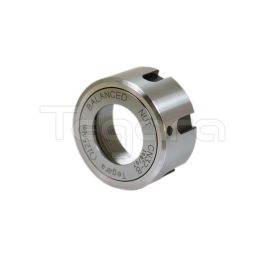- Joined
- Nov 27, 2012
- Messages
- 7,856
I don't own er collets but if the spec for tightening a 32 is 100ft lbs. I find it hard to believe it's being done with two 6" wrenches opposed done in one hand. I've been turning wrenches for 25yrs and 100ft lbs on my 18" torque wrench is alittle effort. I would imagine a lot of user are under torquing the nut? Just my 2cents.
I worked in automotive so I have a good idea on what it takes to torque to 100 ft/lbs & higher. I highly doubt anyone is torquing ER-32 or ER-40 to recommended spec while in the spindle. Need a fixture for the collet chuck to acheive that kind of torque. There are no fixtures for R8 ER collet chucks, would need to hold them in a vise.
It's recommended torque, more so for running high RPMs & feeds mainly in CNC. In a manual machine you can get away not using the recommended torque specs. I snug me ER collets by hand in the spindle with a wrench the nut spanner, I've never had an issue with slipping, not even with a 1" indexable end mill in my ER-40. I'm not alone on this.
Which makes me wonder. Is there a torque spec for R8 collets/drawbar & does anyone use a torque wrench on the drawbar? I've never heard of it. Just saying that much of what we do is by feel & judgement, hopefully good judgement.




